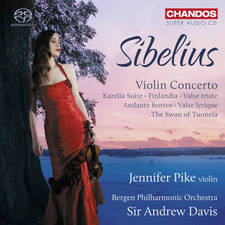Elgar - Wand of Youth Suites: Full Works Concert Highlight of the Week
Jane Jones discovers what Elgar got up to before all that pomp and circumstance.
Listening to his music, I’m often struck by two sides to Elgar. I find myself intrigued, if not confused, by the English composer whose music has become a ready reference for patriotism through his Pomp and Circumstance Marches, the nobility of the music lost in a flurry of flag waving. Yet, this is the man who composed the Cello Concerto which is deeply touching in its melancholy. I’ll state my preference straight away: my Elgar is the man behind the concerto whose most moving music seems to come from the heart, reflecting on his personal experience of loss and depression, composed with humility and understanding.
The Cello Concerto is a fitting end to a career which began with some musical sketches for a family play, later recalled and revisited as the Wand of Youth Suites. The young Edward - described in a much quoted couplet by his mother as: ‘Nervous, sensitive and kind/Displays no vulgar frame of mind’ - was considered rather delicate and unlikely to join in the family games. This reluctance to be drawn into the household rough and tumble with his six brothers and sisters meant Elgar’s involvement in the family’s fun and games was musical rather than physical. So when the Elgar children made up a play for the grown ups, ten year old Edward wrote the music. The play featured Fairies and Giants, and Two Old People – the adult characters of the drama who are lured into the children’s magical world beyond the stream, but the magic fails to work on the grown ups who are then charmed into sleep.
Forty years later, in 1907, Elgar returned to his childhood themes – prompted by a significant birthday when the composer turned 50. Reminiscing and remembering a childhood in Worcestershire and happy holidays with his family, those old musical sketches for the original play were re-worked into two suites called Wand of Youth which included some of the play’s characters and even their stage instructions.
The seven movement Suite No.1 starts with a lively Overture, full of energy and light but you can already detect the unmistakable musical language of the adult Elgar, followed by a lyrical Serenade with the melody played by the clarinet. In the third movement Minuet, Elgar adds the stage directions for adults of the original play – ‘The two old people enter’. After the spirited Sun Dance which Elgar also used in his incidental music The Starlight Express, there are more stage directions - ‘Two fairy pipers pass in a boat, and charm them to sleep’. That’s followed by the Slumber scene, and with the adults out of the way, the Fairies and Giants of the play’s title are centre stage.
The Second Suite begins with the solemn March music which marked the end of the children’s drama, but then Elgar includes a selection which seem to pick out particular scenes or characters, like The Little Bells, and the Fountain Dance. Elgar described one of the other dances, Moths and Butterflies, as one of the oldest of the movements – and it certainly maintains its innocence by comparison with the Bears – one tamed and then the final Wild Bears – where the children give the animals their freedom.
On the Full Works Concert this week, you can hear the first of the two childlike but charming Wand of Youth Suites. Although they were initially dismissed by Elgar as mere trifles, the music for these delightful scenes do capture the introspective side of Elgar’s nature as movingly as anything in his larger scale works.
























